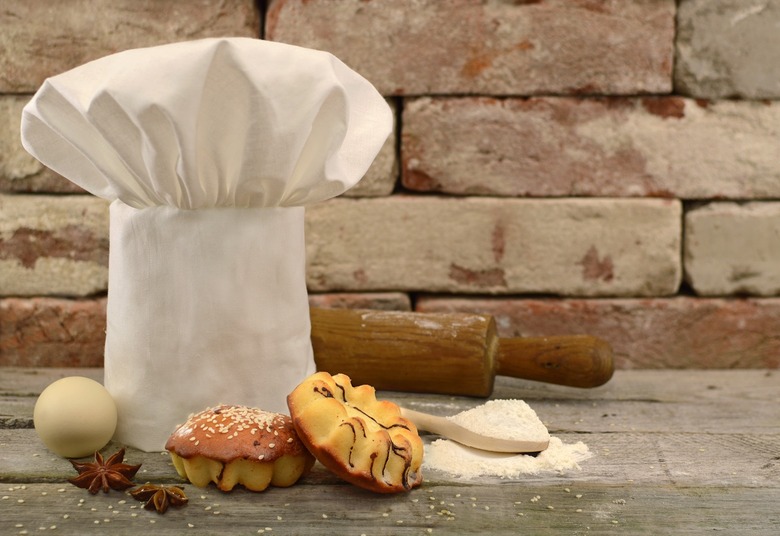How The Toque Blanche Became The Classic 'Chef's Hat'
A chef stands in a kitchen, in a white chef's coat, white apron, neckerchief, and tall white hat. This chef is the epitome of cleanliness, professionalism, and discipline. But why is the old-school chef's hat, or toque, the shape that it is?
The term toque has been around for a few thousand years — it ultimately comes from a word that simply means "hat" in Arabic. In the 1800s the French began using the phrase toque blanche to refer to the white hat worn by chefs as part of their uniform. The color white was perceived as the most hygienic of colors, which helped to portray a sense of cleanliness in the kitchen.
To wear a hat of some sort when cooking food for others in itself does not seem odd at all — rather, it makes sense to keep hair neat, tidy, and out of the food.
The reason for the tall and pleated shape of the toque blanche, however, has to do with skill and rank rather than hygiene. The pleats in a chef's hat, back in the day, were said to represent the number of ways the chef wearing it could cook an egg — 100 pleats being the ultimate goal and badge of honor, denoting the skill, experience, and rank of the chef.
As well as the pleats, the height of the hat was also important. The taller the toque, the higher ranking, more knowledgeable, and more important the chef was.
Today's chefs are more relaxed with their headwear. Though you will certainly still find toques worn these days in classic French restaurants as well as culinary schools, the meaning of the pleats and hat height has diminished quite a bit. Toques these days rarely exceed a height of 12 inches, and as for the number of pleats — well, even if it's just three or four folds, it might still demonstrate a chef's level of experience, if not the number of ways he or she can cook an egg.
